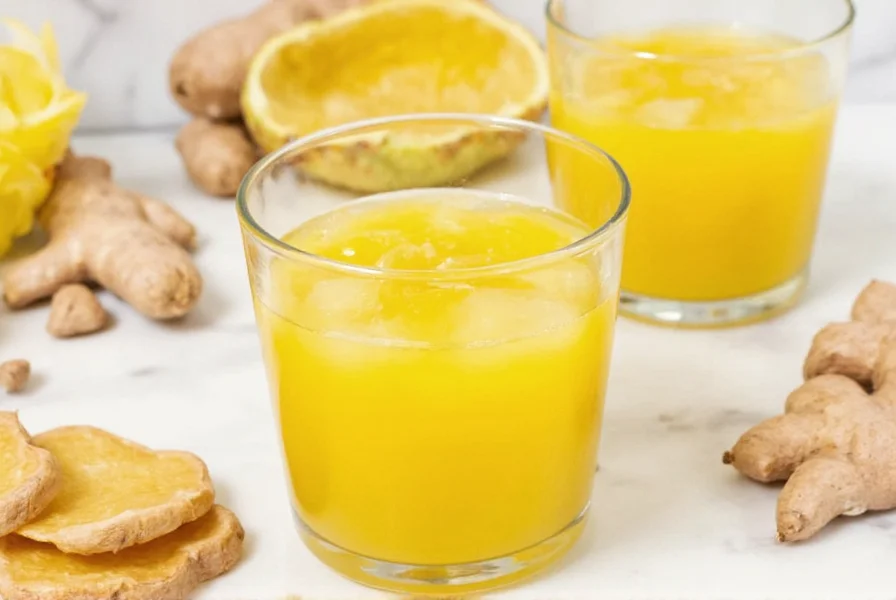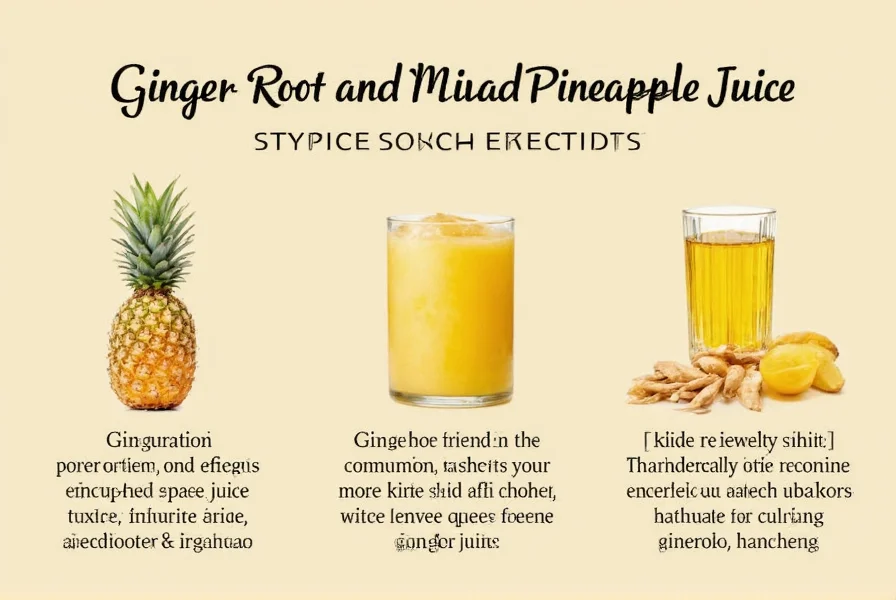For centuries, traditional medicine systems have utilized ginger root and pineapple for digestive support and inflammation management. Modern research provides insight into how these ingredients work individually and together. This comprehensive guide examines the science behind this popular wellness combination while providing practical preparation methods and safety considerations.
Nutritional Powerhouses: Ginger Root and Pineapple Breakdown
Ginger root (Zingiber officinale) contains gingerols, the primary bioactive compounds responsible for its distinctive flavor and potential health properties. Fresh ginger provides:
| Nutrient | Per 100g Raw Ginger | Key Functions |
|---|---|---|
| Vitamin C | 5mg (8% DV) | Antioxidant protection, immune support |
| Magnesium | 43mg (10% DV) | Muscle and nerve function |
| Potassium | 415mg (9% DV) | Fluid balance, blood pressure regulation |
| Gingerols | 0.5-3.0% | Anti-inflammatory, antioxidant properties |
Pineapple juice delivers bromelain, a mixture of proteolytic enzymes with unique properties. A 240ml serving of unsweetened pineapple juice typically contains:
- 131 calories
- 33g natural sugars
- 100% of daily vitamin C needs
- 76% of manganese requirement
- Significant bromelain enzyme content
When combined, these ingredients create a beverage with complementary compounds that may enhance bioavailability and effectiveness of their active components.
Evidence-Based Health Benefits of Ginger and Pineapple Juice
Research suggests several potential benefits from consuming ginger root and pineapple juice, though important distinctions exist between established effects and areas requiring more study.
Digestive Support Mechanisms
Ginger's gingerols stimulate gastric motility and may reduce nausea, while pineapple's bromelain helps break down proteins. A 2020 review in Nutrients noted that ginger supplementation showed promise for:
- Reducing symptoms of functional dyspepsia
- Alleviating pregnancy-related nausea
- Supporting healthy digestion when consumed before meals
Bromelain's protein-digesting properties may complement ginger's effects, potentially reducing bloating and discomfort after protein-rich meals. However, commercial juicing processes often reduce bromelain activity, making fresh preparation preferable for maximum enzyme benefits.
Inflammation Management Potential
Multiple studies indicate ginger's anti-inflammatory properties. Research published in Arthritis demonstrated that ginger extract reduced markers of inflammation in osteoarthritis patients. The combination with pineapple's vitamin C and bromelain creates a synergistic effect that may enhance these properties.
It's crucial to understand that while these ingredients show promise as part of an anti-inflammatory diet, they're not replacements for medical treatment of chronic inflammatory conditions.
Creating Effective Ginger Pineapple Juice: Methods and Ratios
Maximizing the potential benefits requires proper preparation techniques. Here's a science-informed approach to making ginger root and pineapple juice:
Basic Preparation Method
- Peel 1-2 inches of fresh ginger root (approximately 30g)
- Cut 2 cups of fresh pineapple into chunks (avoid canned for maximum bromelain)
- Add ingredients to high-speed blender with 1 cup water
- Blend for 60-90 seconds until smooth
- Strain through fine mesh sieve or nut milk bag
- Consume immediately for maximum enzyme activity
This ginger pineapple juice recipe for digestion maintains optimal enzyme activity while providing balanced flavor. For enhanced absorption, add a small amount of healthy fat like coconut oil or chia seeds, as many of ginger's compounds are fat-soluble.

Safety Considerations and Appropriate Consumption
While generally safe for most people, certain precautions apply when consuming ginger root and pineapple juice regularly:
- Blood thinning effects: Ginger may enhance blood-thinning medications; consult your physician if taking anticoagulants
- Acid sensitivity: Pineapple's acidity may aggravate GERD or sensitive stomachs; consume with food if needed
- Recommended amounts: 1-2 tablespoons of fresh ginger daily is generally considered safe; excessive amounts may cause heartburn
- Pregnancy considerations: Moderate ginger consumption appears safe during pregnancy, but consult your healthcare provider
For most adults, 4-8 ounces of homemade ginger pineapple juice 2-3 times weekly provides potential benefits without risk of adverse effects. Those with specific health conditions should consult healthcare professionals before making this a regular part of their diet.
Frequently Asked Questions
Can ginger and pineapple juice help with weight loss?
While ginger and pineapple juice isn't a weight loss solution, it may support metabolic health as part of a balanced diet. Ginger shows potential for modest effects on metabolism in some studies, and the beverage provides hydration with minimal calories when prepared without added sugar. However, sustainable weight management requires comprehensive lifestyle approaches rather than relying on single ingredients.
How often should I drink ginger pineapple juice for inflammation?
For potential anti-inflammatory benefits, consuming 4-6 ounces of fresh ginger pineapple juice 2-3 times weekly may be beneficial. Consistency matters more than frequency—regular moderate consumption appears more effective than occasional large amounts. Remember that this beverage works best as part of an overall anti-inflammatory diet rich in fruits, vegetables, and whole foods.
Does store-bought pineapple juice contain enough bromelain for benefits?
Most commercial pineapple juices undergo pasteurization that destroys bromelain enzyme activity. Freshly prepared juice from raw pineapple provides significantly higher bromelain content. If using store-bought juice, look for 'unpasteurized' or 'cold-pressed' varieties, though even these typically contain less active enzyme than fresh preparation. For maximum bromelain benefits, consume juice made from fresh pineapple within 24 hours.
Can I use ginger powder instead of fresh ginger root?
Fresh ginger root contains higher levels of active gingerols compared to dried powder. While ginger powder offers convenience, it typically has about 15-20% less gingerol content due to processing. For therapeutic potential, fresh ginger is preferable. If using powder, increase the amount by approximately 25% (1 teaspoon powder ≈ 1 tablespoon fresh grated ginger) though this won't fully compensate for the reduced bioactive compounds.
How long does homemade ginger pineapple juice last in the refrigerator?
Freshly made ginger pineapple juice maintains optimal enzyme activity and nutrient content for 24-48 hours when stored in an airtight container in the refrigerator. After this period, bromelain activity decreases significantly and oxidation affects flavor. For best results, prepare only what you'll consume within one day. Separation is normal—simply shake before drinking if this occurs within the first 24 hours.











 浙公网安备
33010002000092号
浙公网安备
33010002000092号 浙B2-20120091-4
浙B2-20120091-4